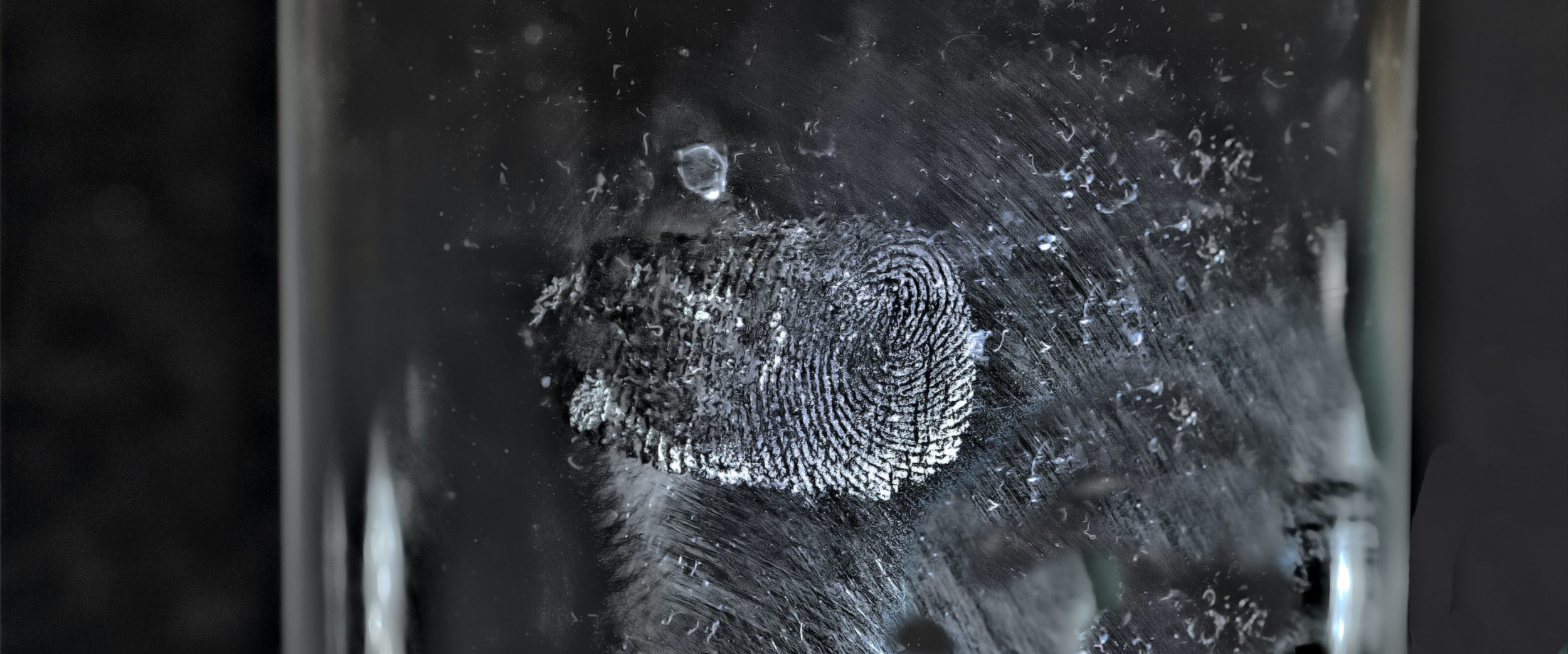Early in my career as a public defender in Washington, D.C., I listened to Devil in the Grove, Gilbert King’s meticulously researched account of four young Black men — Charles Greenlee, Sam Shepherd, Walter Irvin, and Ernest Thomas — falsely accused of rape by a white woman in 1949 in Groveland, Florida. The book’s determined refusal to gloss over the vicious brutality the state and the Groveland community demonstrated in seeking to convict and kill the men jars. But it also documents a smaller — in relative terms — subversion of justice that keeps resurfacing in my mind years later. Recognizing a hole in the prosecution’s case, sheriff’s deputy James Yates claimed to have taken plaster casts of a shoeprint supposedly discovered at the scene. He later testified the casts matched the shoeprint of Walter Irvin. The claim was fabricated, and it is widely believed that the casts purportedly of the crime scene print were taken from Irvin’s shoes well after he had been arrested.
Yates’ flagrant framing of Irvin is thankfully an uncommon injustice today (though it does still happen). But it is still common for forensic evidence to be exaggerated, inadequately supported, the result of shoddy analysis, impacted by bias, or a product of unvalidated methods with insufficient foundation. I had observed many of these issues in my own practice. I had also seen that the flaws with the forensic “science” system ran far deeper than individual cases. Washington, D.C.’s lab was in the news several times for scandals involving erroneous results. Before it became independent in 2012, despite claiming their work was unbiased, neutral, and scientific, forensic analysts refused to talk to me and other defense attorneys about their analyses or conclusions — while at the same time working closely with our opposing counsel in the prosecutors’ office. Even after Washington, D.C. established an independent agency separate from law enforcement to handle the city’s forensic needs (one of the first in the country), many analysts and examiners in that new office wouldn’t talk to me without a prosecutor present or listening in.
I had also observed that, more often than not, judges didn’t appear to care. Sometimes they flat out refused to scrutinize forensic evidence when asked. What I was seeing wasn’t unique; it is common for judges to look the other way in the face of research pointing to flaws in forensic methods, relying on precedent to allow its admission instead.
Read the article
Many attempts to reform forensics have been made over the years, but the law enforcement and forensic communities have resisted change, and reform efforts have been slow to take hold. In a forthcoming article in the Alabama Law Review, “Radically Reimagining Forensic Evidence,” I offer a new perspective on why this resistance persists and propose a new way of thinking about forensics in the context of the larger criminal justice reform movement. First, to understand its structural flaws, the forensic system’s carceral origins must be acknowledged. Second, we can take lessons from the modern criminal justice reform movement by looking beyond conventional or “reformist” reforms to seek radical, transformative change.
The Carceral Foundations of Forensics
Even though the forensic system intersects with the broader scientific community, forensics cannot be treated as separate from the carceral system. Forensic methods are used to surveil and monitor, to investigate, to prosecute, and to convict. These are the essential functions of the criminal legal system, used disproportionately on Black and brown people. Moreover, most forensic methods were not developed in scientific research labs, but by law enforcement as tools to pursue suspects and secure convictions without the underpinnings of rigorous science. That early alignment with law enforcement seeped into forensic culture and continues to influence how the forensic community approaches research, training, and practice. As with other carceral institutions, Black, brown, and other marginalized communities have borne the brunt of forensic failures.
Because forensic evidence is played off as rigorous science, it adds a veil of legitimacy to even illegitimate prosecutions. That’s what Yates was doing with those plaster shoeprint casts. The falsification of the shoeprint testimony was designed to legitimize the Groveland prosecutions in the same way that forensics have been used to legitimize many miscarriages of justice. And, because of the label of science and the aura of legitimacy, accuracy, and reliability that comes with it, jurors and judges alike tend to believe forensic evidence even when it is incorrect or overstated.
Against this backdrop, I document two structural impediments to reform. First, prosecutors as a collective body have successfully pushed back on reform efforts. Second, segments of the forensic community itself have manufactured a perception of reliability around forensics when such a perception is unwarranted.
[P]rosecutors as a collective body have successfully pushed back on reform efforts.
Maneka sinha
We expect prosecutors to seek truth and justice. We expect them to want accurate information, even if that means they won’t get a conviction. But time and again, evidence has revealed that prosecutors don’t always view forensics as a science-driven, truth-seeking tool. Instead, they use these methods as a law enforcement, conviction-seeking tool. It is not well known that prosecutorial entities like the Department of Justice have actively undermined research efforts aimed at improving forensic methods. Some of these efforts have included conditioning funding for research on the right to review conclusions before publication; repeated rejection of the recommendations of researchers on how to improve forensic methods; and attempts to exert control over those reform efforts that have managed to get off the ground.
A striking example of this resistance relates to the National Commission on Forensic Science, a cross-disciplinary body of experts, organized to advise and make recommendations to the Attorney General with respect to forensic methods. The commission was established in 2012 by DOJ, in conjunction with the National Institute of Standards and Technology. On its face, this would appear to be a step in support of forensic advancement, but in actuality, the NCFS was a diluted compromise to avoid the establishment of a centralized forensic governing body outside of DOJ control. DOJ set the NCFS’s agenda and determined who would sit on the body. The commission had no ability to ensure adoption of its recommendations; the attorney general had full rein to accept or reject its recommendations. Despite these hurdles, the NCFS was productive and made important recommendations for reform, even if the most transformative were not adopted. In response, however, DOJ disbanded the NCFS in 2017 over the objection of many of its members and others. In its stead, DOJ appointed a career prosecutor criticized for having an anti-reform agenda to head its own, internal forensic working group.
read the ncfs report
Meanwhile, the forensic community played its own role in resisting change by propping up forensic methods as more scientific than has been established. For example, one factor judges consider before deeming scientific evidence reliable, a prerequisite of admissibility, is whether a forensic method has been subjected to peer review and publication. The goal is to determine whether a method has been subjected to the type of scrutiny that would reveal flaws in order for those flaws to be remedied. But many disciplines — including firearms, bitemark, and handwriting analysis — have been criticized for installing professional trade journals written by and for practitioners that, on the surface, appears to satisfy this factor; the reality is that these publications are insulated from broad, interdisciplinary review. More to the point, forensic practitioners often share an institutionalized alignment with prosecutors — those who rely on their work the most. Meaning: “Peer” review by peers with the very same alignments and career-based interest in survival of the forensic status quo as the proponents of research can hardly be trusted to provide meaningful scrutiny. It is a poorly designed mechanism to reveal flaws in the discipline, and a much more concerning, albeit less apparent, structural flaw in the forensic system.
Beyond Reform
Understanding these two forces as central to the forensic science system’s resistance to reform is not enough. Repeated reform efforts have yielded only marginal progress. One early recommendation proposed in a landmark 2009 report evaluating forensic methods was for a centralized, national forensic governing body to monitor, guide, and ensure high quality forensic work across the country. That recommendation never got off the ground. Among others were recommendations for mandatory accreditation of laboratories and removal of forensic science work from law enforcement control. These, too, have not resulted in significant change. While labs are overwhelmingly accredited today and some are being moved out of police departments, accreditation and independence have proven insufficient to ensure accuracy of analysis or to prevent shoddy lab work, suppression of results, or other lab scandals. Despite its independence and the stamp of approval of an accreditation body, Washington, D.C.’s crime lab has been plagued by scandals involving improper analysis, quality assurance concerns, false identifications, pressure from management on examiners to change their conclusions, and more.
Of course, some efforts have had a positive impact. For example, more research to shore up some disciplines has and is being conducted. A smattering of judges have begun to take a closer look at some forensic disciplines that have come under scrutiny. But many of the reforms proposed to date — like those for mandatory accreditation and increased governance of labs — serve to shore up the legitimacy of the field in the same ways that conventional reform proposals do in the policing context. And none of it accounts for the historical relationship between forensics and law enforcement or the role of forensics in the larger carceral institution.
"[M]any of the reforms proposed to date … serve to shore up the legitimacy of the field in the same ways that conventional reform proposals do in the policing context."
How do we change that? Since George Floyd’s murder and the massive Black Lives Matter protests movement that followed, the idea that modest, conventional reforms to policing have proven unsuccessful in preventing harm — particularly to Black, brown, and other marginalized communities — has begun resonating in mainstream dialogue. Instead of dealing with deep-rooted rot, reformers contend that such “reformist” reforms serve to add unearned legitimacy without yielding meaningful change. As a result, calls for reforms that seek to replace police forces with institutions focused on caring for communities — like divest/invest, defund, and dismantle, among others — have started to take hold. The forensic system has not yet been a part of this conversation. But it should be. When viewed through this lens, it makes much more sense that many attempts to reform forensics have faltered or failed to yield meaningful reform in the face of resistance.
Applying the lessons of this movement in the context of forensics could take many forms. Most obviously, it might require a total end to the use of forensic methods in the criminal legal system, whether for investigatory purposes, at trial as evidence, or otherwise. Alternatively, a divest-invest model might favor defunding forensic service providers and investing in research towards building community-controlled institutions of care, for example — around housing, food security, anti-violence intervention, or education. In recognition of forensics’ role in contributing to the harms of the carceral system, applying these lessons might also mean eliminating law enforcement’s ability to use forensic evidence for policing and prosecutions, while allowing its use for exculpatory purposes. It is not yet clear which of these models — or any others — is correct, but that’s because forensics has remained outside of this dialogue. But that has to change; forensics must be included in the broader ongoing national conversation on criminal justice reform. And that conversation must start now.
Image: Unsplash
Applying the lessons of this movement . . . might require a total end to the use of forensic methods in the criminal legal system . . . .
Maneka Sinha

